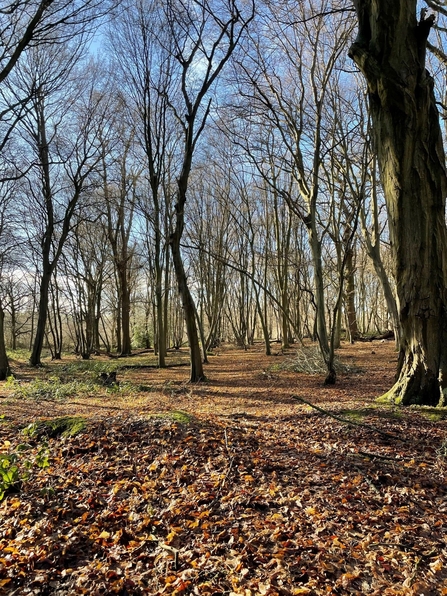Peter Tallantire was voted in as Chair of Trustees at our AGM, last September, further to his election as a Trustee in 2020. Here, Peter tells us about his motivations for taking on a governance role at the Trust, and his thoughts and ambitions for the future.
Governing the Future of the Trust
Archers Green Nature Reserve © Debbie Bigg

Peter Tallantire, Chair of Trustees
I was born in the old county of Middlesex and brought up in Hertfordshire to love wildlife and the countryside around me – my mother was a big influence in that and together we would visit local farms, Whipsnade Zoo and animal sanctuaries.
My working career was spent in the Civil Service and I eventually spent 30 years working in the Cabinet Office, mainly on crisis management and response - an amazing privilege working with dedicated people to minimise harm, here and abroad. Although I retired from full time employment in 2022, I still work part time for the department.
As a welcome escape from the all-encompassing nature of the day job, we bought a smallholding in Redbourn, some 25 years ago. I am particularly proud of the diverse flora and fauna we have, with well over a thousand species recorded there so far!
Having lived in the region all my life, I wanted to do more to look after nature locally. I’ve been a member of the Trust and other local wildlife charities for many years and I was appointed as a Trustee in 2020. It was a great honour to be elected as Chair last year - the Trust is a wonderful organisation, caring for some amazing places, with inspiring people fighting for nature every day! I see my role as supporting and advising the executive team to deliver our shared vision and three key goals so that by 2030 we will see:
• More land in Hertfordshire and Middlesex being managed and protected for nature;
• More people standing up for wildlife and taking action for nature’s recovery; and
• Nature playing a central and valued role in helping to address climate issues and people’s health and wellbeing.

Astonbury Wood Nature Reserve (c) Debbie Bigg
We have made tremendous progress already, which the recent purchase of two new nature reserves, Archers Green and Astonbury Wood attest to; however, there is still a long way to go and a growing list of challenges to be overcome, exemplified by the ongoing fight to protect Broadwater Lake SSSI from damaging development. Standing up for nature and caring for our reserves, takes people and money. So, it’s a priority for me to ensure the Trust is on a sustainable financial footing, to meet the challenges ahead.
The most rewarding thing about being a Trustee is being able to help protect nature across our area. I can do a bit myself at home, but through the brilliant work of the Trust so much more can be achieved, whether it be making the case for nature, purchasing a new reserve, or looking after the land in our care. We are so much stronger and more effective together, not least as part of the wider family of Wildlife Trusts with nearly one million members and responsible for over 2,500 reserves across the country.
It’s amazing to think the Trust has grown from a small inaugural meeting, held in St Albans, back in 1964, to having over 23,000 members, more than 40 nature reserves, and is, rightly, highly respected as the leading voice for wildlife conservation in Hertfordshire and Middlesex. That is some achievement!
As for the future, the key for me is supporting nature’s recovery. The Hertfordshire State of Nature Report provides a baseline on which to build. The Trust cannot reverse the declines on its own. And we cannot turn back the clock. Some species will be lost, others will arrive - even hopefully return. But through our three goals for 2030 and by working with others, we can ensure a positive future for wildlife locally and, hopefully, reconnect often isolated refuges into larger, thriving, eco-systems. To do this, the Trust needs to evolve too, not least to ensure we can continue to engage and enthuse our local communities.
Find out the many ways you can support the work of the Trust here.

